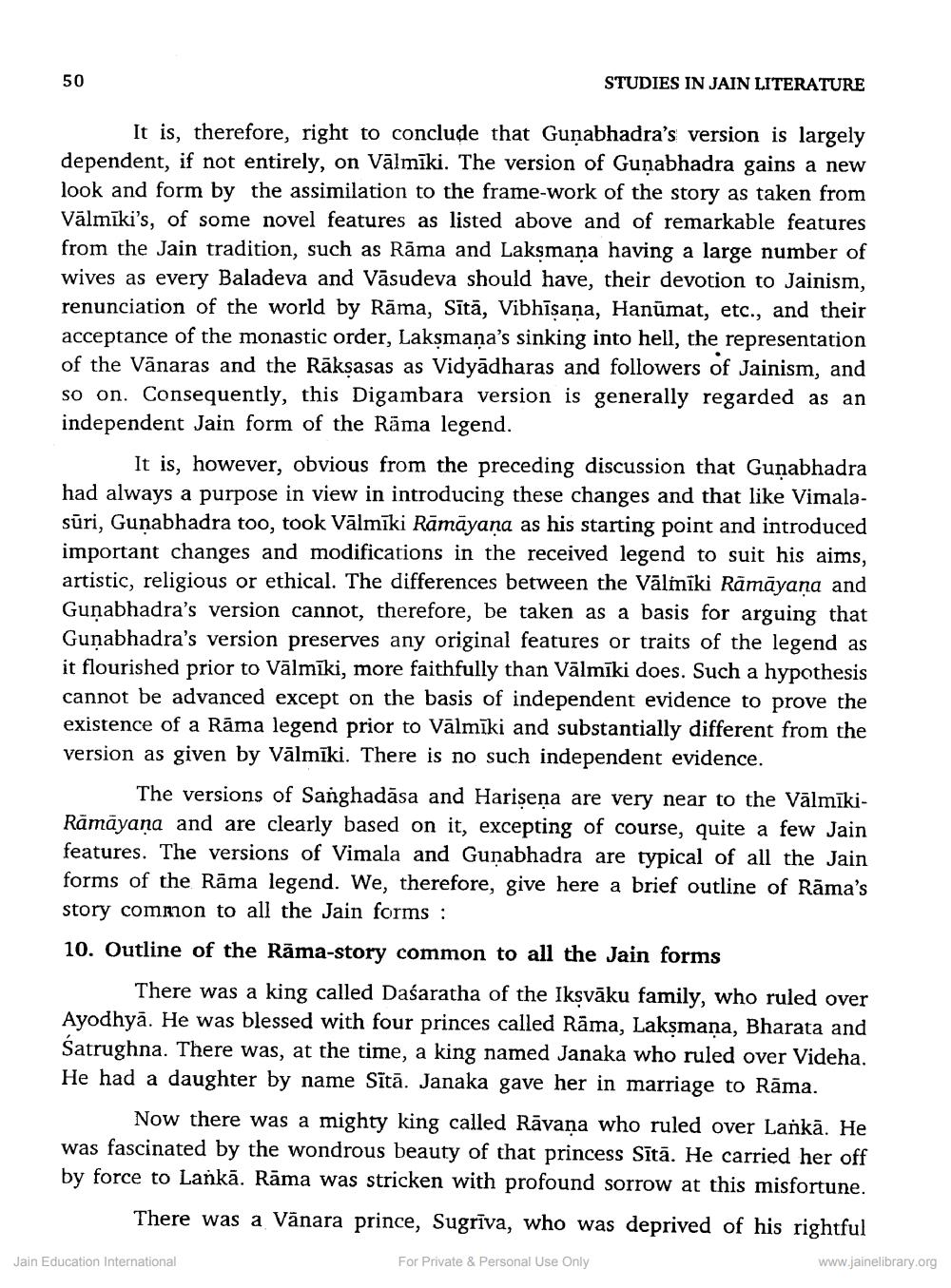________________
50
STUDIES IN JAIN LITERATURE
It is, therefore, right to conclude that Gunabhadra's version is largely dependent, if not entirely, on Vālmīki. The version of Gunabhadra gains a new look and form by the assimilation to the frame-work of the story as taken from Vālmīki's, of some novel features as listed above and of remarkable features from the Jain tradition, such as Rāma and Laksmana having a large number of wives as every Baladeva and Vāsudeva should have, their devotion to Jainism, renunciation of the world by Rāma, Sītā, Vibhīsana, Hanūmat, etc., and their acceptance of the monastic order, Lakşmaņa's sinking into hell, the representation of the Vānaras and the Rākşasas as Vidyādharas and followers of Jainism, and so on. Consequently, this Digambara version is generally regarded as an independent Jain form of the Rāma legend.
It is, however, obvious from the preceding discussion that Gunabhadra had always a purpose in view in introducing these changes and that like Vimalasūri, Gunabhadra too, took Vālmīki Rāmāyana as his starting point an important changes and modifications in the received legend to suit his aims, artistic, religious or ethical. The differences between the Vālmīki Rāmāyana and Gunabhadra's version cannot, therefore, be taken as a basis for arguing that Gunabhadra's version preserves any original features or traits of the legend as it flourished prior to Vālmīki, more faithfully than Vālmīki does. Such a hypothesis cannot be advanced except on the basis of independent evidence to prove the existence of a Rāma legend prior to Vālmīki and substantially different from the version as given by Vālmīki. There is no such independent evidence.
The versions of Sanghadāsa and Harisena are very near to the VālmīkiRāmāyana and are clearly based on it, excepting of course, quite a few Jain features. The versions of Vimala and Gunabhadra are typical of all the Jain forms of the Rāma legend. We, therefore, give here a brief outline of Rāma's story common to all the Jain forms:
10. Outline of the Räma-story common to all the Jain forms
There was a king called Daśaratha of the Ikşvāku family, who ruled over Ayodhyā. He was blessed with four princes called Rāma, Laksmana, Bharata and Satrughna. There was, at the time, a king named Janaka who ruled over Videha. He had a daughter by name Sītā. Janaka gave her in marriage to Rāma.
Now there was a mighty king called Rāvana who ruled over Lankā. He was fascinated by the wondrous beauty of that princess Sītā. He carried her off by force to Lankā. Rāma was stricken with profound sorrow at this misfortune.
There was a Vānara prince, Sugrīva, who was deprived of his rightful Jain Education International For Private & Personal Use Only
www.jainelibrary.org




